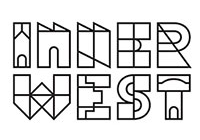Inner West Council area
Overseas born - Language spoken at home
In 2021, 94.0% of the population [Toggles].[COIIDDisplayLabel] in the Inner West Council area, spoke a language other than English at home.
The Inner West Council area's language statistics show the proportion of the overseas-born population who speak a language at home other than English. They indicate how linguistically diverse a population is, and whether most migrants are from English speaking countries or non-English speaking countries. This topic also shows those languages spoken specifically by the first-generation migrants (those born overseas) so as to separate them from those born in Australia who speak another language.
Some countries, such as India, have a variety of languages spoken there, so the language spoken can indicate the region of the country of origin. Languages such as Arabic and Spanish are spoken in a range of different countries.
The Inner West Council area's language statistics should be analysed in conjunction with Proficiency in English to assist in identifying specific cultural and ethnic groups in the area and the services required by the multicultural community.
Derived from the Census question:
'Does the person use a language other than English at home?'
People [Toggles].[COIIDDisplayLabel]
| Language spoken at home - Ranked by size | ||||||||
|---|---|---|---|---|---|---|---|---|
| Inner West Council area - [Toggles].[COIIDDisplayLabel] | 2021 | 2011 | Change | |||||
| Language | Number | % | Greater Sydney | Number | % | Greater Sydney | 2011 to 2021 | |
| Mandarin | 3,955 | 71.3 | 74.3 | 30144 | 3,810 | 66.8 | 62.1 | +145 |
| Cantonese | 1,043 | 18.8 | 19.1 | 30035 | 1,265 | 22.2 | 27.7 | -222 |
| Wu | 83 | 1.5 | 0.8 | 30263 | 59 | 1.0 | 0.7 | +24 |
| Chinese, nfd | 56 | 1.0 | 0.8 | 30043 | 248 | 4.3 | 4.5 | -192 |
| Tibetan | 14 | 0.3 | 0.3 | 30241 | 12 | 0.2 | 0.1 | +2 |
| Russian | 13 | 0.2 | 0.3 | 30203 | 30 | 0.5 | 0.9 | -17 |
| Uygur | 12 | 0.2 | 0.1 | 30258 | 7 | 0.1 | 0.1 | +5 |
| Min Nan | 11 | 0.2 | 0.2 | 30153 | 18 | 0.3 | 0.3 | -7 |
Source: Australian Bureau of Statistics, Census of Population and Housing (opens a new window) 2011 and 2021. Compiled and presented by .id (opens a new window)(informed decisions).
Excludes languages with fewer than 10 people speaking them at home.
| Language spoken at home - Summary | ||||||||
|---|---|---|---|---|---|---|---|---|
| Inner West Council area - [Toggles].[COIIDDisplayLabel] | 2021 | 2011 | Change | |||||
| Language summary | Number | % | Greater Sydney | Number | % | Greater Sydney | 2011 to 2021 | |
| Speaks English only | 311 | 5.6 | 2.9 | 60500 | 196 | 3.4 | 2.7 | +115 |
| Non-English total | 5,215 | 94.0 | 96.3 | 60510 | 5,489 | 96.3 | 96.8 | -274 |
| Not stated | 24 | 0.4 | 0.7 | 60520 | 17 | 0.3 | 0.5 | +7 |
| Total people | 5,550 | 100.0 | 100.0 | 5,702 | 100.0 | 100.0 | -152 | |
Source: Australian Bureau of Statistics, Census of Population and Housing (opens a new window) 2011 and 2021. Compiled and presented by .id (opens a new window)(informed decisions).

Compiled and presented in profile.id by .id (informed decisions).

Compiled and presented in profile.id by .id (informed decisions).
Dominant groups
Analysis of the language spoken at home by the population [Toggles].[COIIDDisplayLabel] in the Inner West Council area in 2021 compared to Greater Sydney shows that there was a larger proportion of people who spoke English only, and a smaller proportion of those speaking a non-English language (either exclusively, or in addition to English).
Overall, 5.6% of the population [Toggles].[COIIDDisplayLabel] spoke English only, and 94.0% spoke a non-English language, compared with 2.9% and 96.3% respectively for Greater Sydney.
The dominant language spoken at home by the population [Toggles].[COIIDDisplayLabel], other than English, in the Inner West Council area was Mandarin, with 71.3% of the population, or 3,955 people speaking this language at home.
The major difference between the languages spoken at home for the population [Toggles].[COIIDDisplayLabel] in the Inner West Council area and Greater Sydney was:
- A smaller percentage speaking Mandarin at home (71.3% compared to 74.3%)
Emerging groups
Between 2011 and 2021, the number of the population [Toggles].[COIIDDisplayLabel] who spoke a language other than English at home decreased by 274 or 5.0%, and the number of people who spoke English only increased by 115 or 58.7%.
The largest changes in the spoken languages of the population in the Inner West Council area between 2011 and 2021 were for those speaking:
- Cantonese (-222 persons)
- Chinese, nfd (-192 persons)
- Mandarin (+145 persons)
